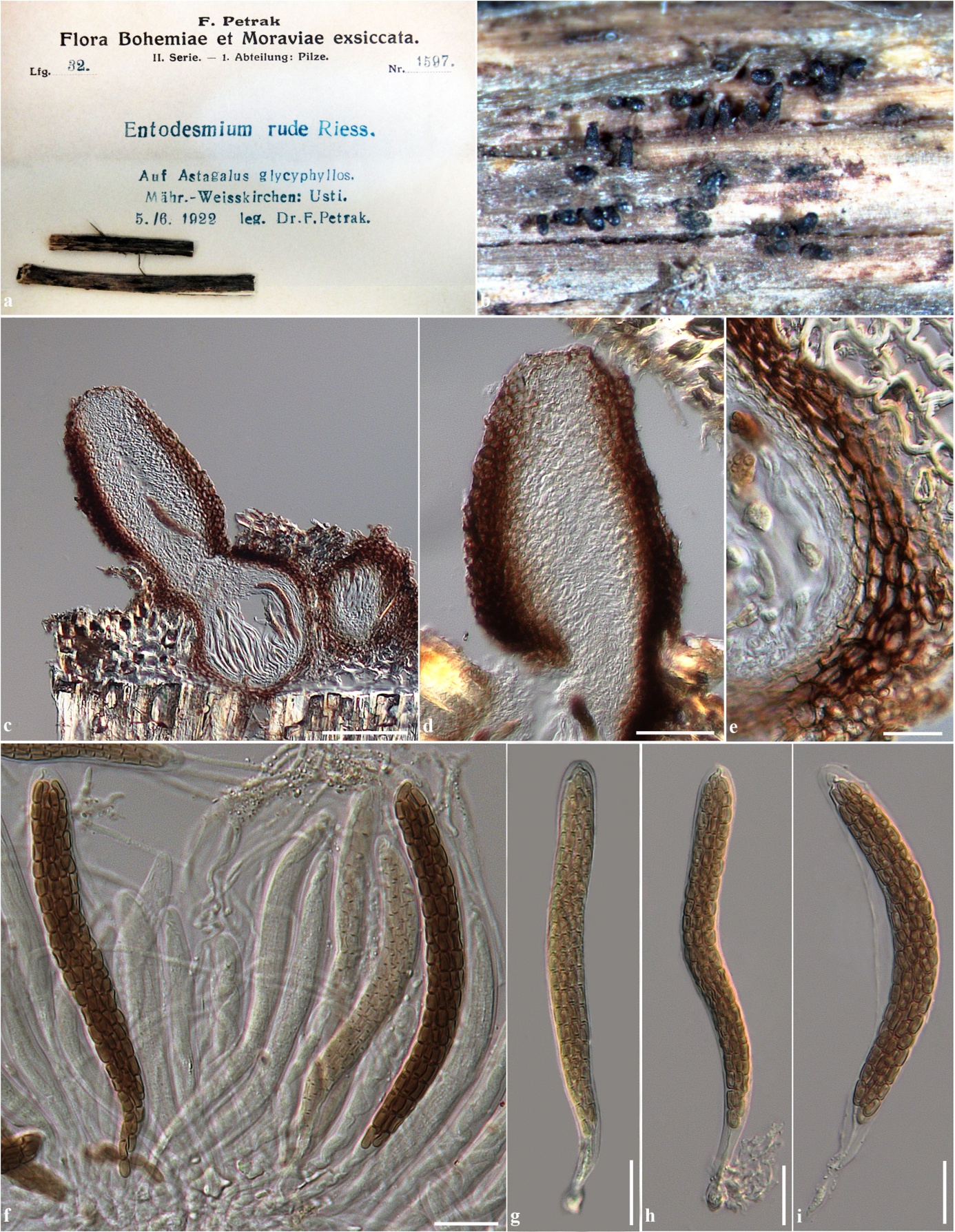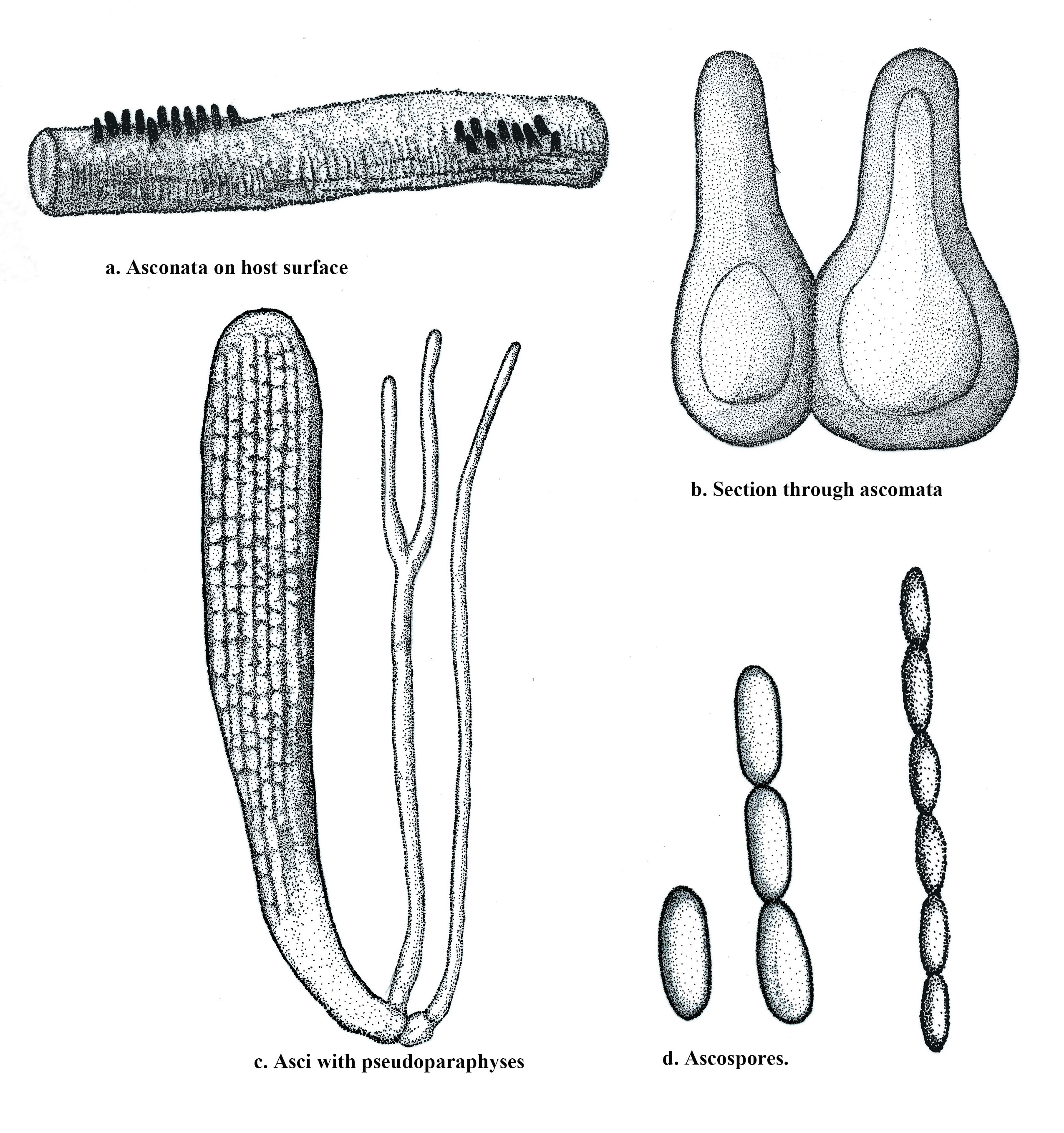Entodesmium rude Riess, Hedwigia 1(6): 28 (1854)
Saprobic on Astragalus, Coronilla and Lathyrus spp. Sexual state: Ascomata 160–240μm high (excluding neck),
160–255μm diam., scattered, solitary to gregarious, immersed to erumpent through host tissue with long neck, visible as black dots, in rows or groups on host surface, uniloculate, globose to subglobose, glabrous, dark brown to black, ostiole oblique, with long carbonaceous neck. Neck 175.5–295μm high, 90–150μm diam., thick-walled, cylindrical to cylindricclavate, arranged in a textura angularis, dark brown to black, carbonaceous, with periphyses. Peridium 15–30μm wide, thick-walled, of equal thickness, comprising two layers, outer layer comprising 3–5 cell layers of brown to dark brown, thick-walled cells, arranged in textura angularis to textura globulosa, inner layers comprising 1–2 cell layers of thinwalled, hyaline, flattened cells, arranged in textura angularis to textura prismatica. Hamathecium composed of numerous, 2–3μm wide, filiform, distinctly septate, broad cellular pseudoparaphyses, embedded in mucilaginous matrix, anastomosing at the apex. Asci (124–)130– 145(−156)×(11–)13–15(−18) μm (x = 137.4×14.4μm, n=25), 8-spored, bitunicate, broadly cylindrical to cylindric- clavate, short pedicellate, apically rounded with welldeveloped ocular chamber. Ascospores (100–)110– 120(−135)×3–4μm (x= 115.5×3.5μm, n=25), fasciculate, scolecosporous, filiform, initially hyaline to pale brown, becoming brown to reddish-brown at maturity, multi-septate, with 18–20 septa, constricted at the septa, easily separating into part spores, smooth-walled.
Material examined: GERMANY, on stem of Astragalus glycyphyllos, December 1853, H. Riess, Hedwigia 1(6): Tab
IV, (Fig 4., iconotype) (1854); CZECHOSLOVAKIA, Usti, on Astragalus glycyphyllos L. (Fabaceae), 6 May 1922, F. Petrak (BR 5020100367693); CZECHOSLOVAKIA, Moravia, Hranice (Maehr.-weisskirchen), on branches of Astragalus glycyphyllos L. (Fabaceae), July 1924, F. Petrak (BPI 626664).
Fig. 1 Entodesmium rude (BR 5020100367693). a Herbarium packet and specimens. b Ascomata on substrate. c Section through ascomata. d Section through neck. e Section through peridium. f Asci with pseudoparaphyses. g–i Asci. Scale bars: c=100μm, d=50μm, e, f, g, h, i=20μm.
Fig. 2 Entodesmium rude (iconotype) redrawn from Riess (1854). a Ascomata on host surface. b Section through ascomata. c Ascus with pseudoparaphyses. d Ascospores


